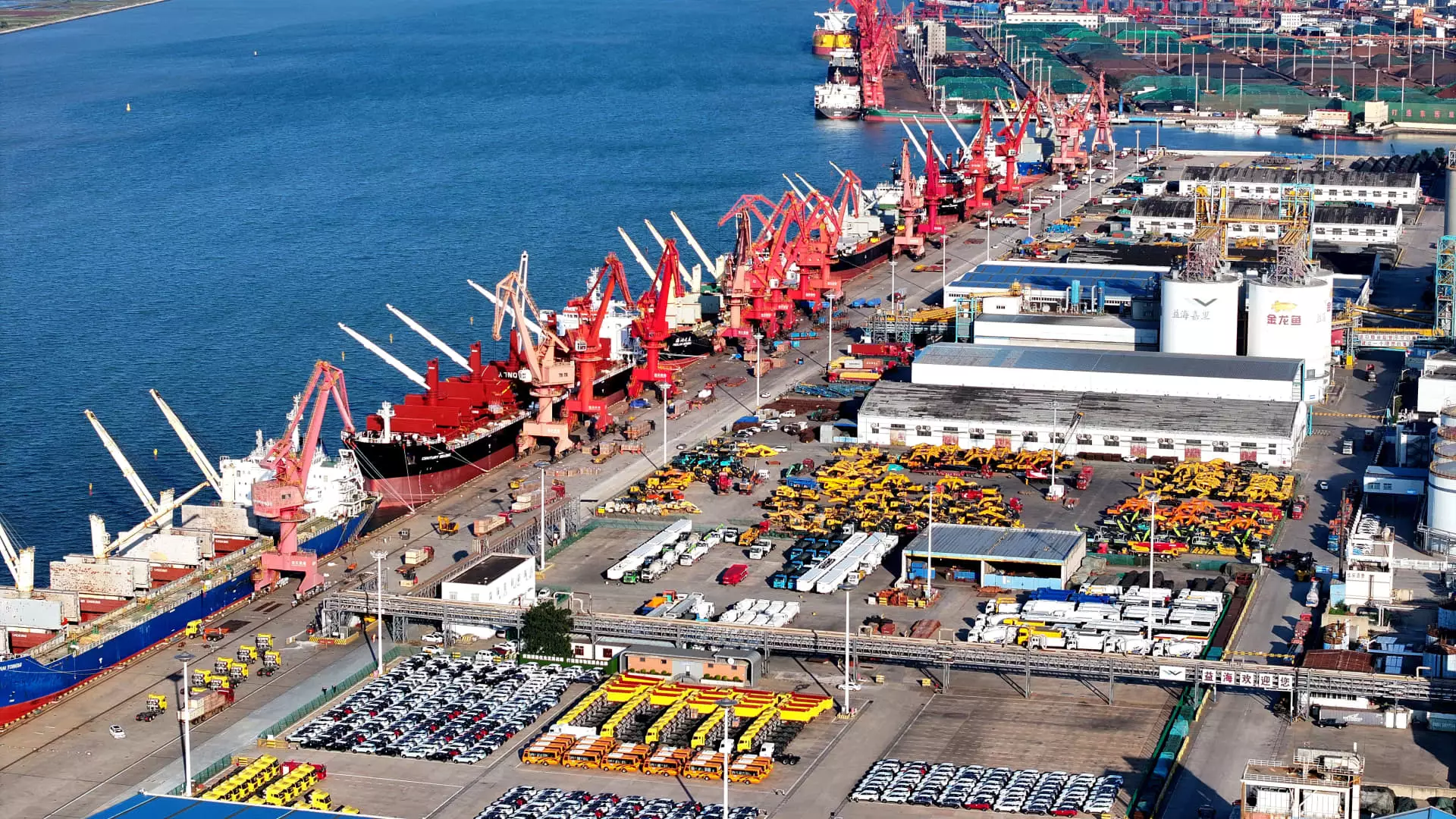The recent announcement of a 10% drop in industrial profits for China in October is an alarming indication of deeper economic challenges within the nation. Marking the third consecutive month of declining profits, this downward trajectory paints a grim picture for Beijing’s ongoing efforts to stabilize the economy through stimulus measures. The decline in October follows an even steeper loss in September, where profits plummeted by 27.1%, the most significant drop witnessed since March 2020, during the initial waves of the pandemic.
Industrial profits are a vital indicator of the vitality of China’s manufacturing, mining, and utility sectors. According to data released by the National Bureau of Statistics, profits for January through October decreased by 4.3% year-on-year, escalating from a 3.5% decrease in the preceding month. This decline underscores a persistent erosion of profitability, signaling that Beijing’s immediate economic support strategies have yet to yield significant results in reversing this negative trend.
Despite assurances from the National Bureau of Statistics that improved performance was noted among several industrial sectors—including equipment and high-tech manufacturing—it is essential to approach these statements with a discerning eye. Whereas the data has shown some measures of improvement, they have not swept away the sweeping deterioration evident in other sectors, notably in light of the continuous deflationary environment.
Yu Weining, a statistician from the NBS, attributed the modest improvement in October to the impact of these stimulus initiatives. However, economists remain skeptical. Eugene Hsiao, head of China equity strategy at Macquarie Capital, remarked that the slowed decline could reflect a stabilizing economic landscape, albeit from a notably low starting point. The scenario has also been influenced by a rush in shipments from local exporters to the U.S. as they sought to preemptively counter anticipated tariff increases.
The dichotomous nature of China’s economic indicators complicates the narrative. While state-owned enterprises faced an 8.2% plunge in profits, private companies experienced a more modest decline of 1.3%. Intriguingly, foreign industrial firms recorded a slight uptick in profits of 0.9%, suggesting that international companies could be better positioned in this strained economic environment than their domestic counterparts.
The broader picture of China’s economy in October illustrates an apparent disconnect between various sectors. Though retail sales managed to exceed expectations with a 4.8% growth year-on-year, broader economic indicators tell a story of slow recovery. Notably, the consumer price index rose by a mere 0.3%, the slowest increase since mid-2023, while the producer price index recorded a notable decline of 2.9%, marking a deepening deflationary trend.
Investment in fixed assets, particularly in the real estate sector, presented a stark reminder of the uphill battle that lies ahead for the Chinese economy. A marked 10.3% reduction in real estate investments from January to October demonstrates the significant impact of the protracted real estate downturn, which has generated additional strain on overall economic stability.
With the world’s second-largest economy experiencing its slowest growth since early 2023, Beijing is increasingly compelled to step up its stimulus initiatives to achieve the elusive growth target of “around 5%.” The upcoming release of the manufacturing purchasing managers’ index (PMI) for November presents another crucial indicator to watch, with expectations suggesting a slight improvement to 50.3 from the prior month’s reading of 50.1.
While short-term gains in some sectors may offer a glimmer of hope, the long-term outlook remains uncertain. With persistent challenges related to deflation, weak domestic consumption, and a sagging real estate market, it is evident that China’s economy is navigating through turbulent waters. How effectively the government can implement further fiscal support to uplift corporate earnings will ultimately determine the sustainability of any rebound in the months ahead. As the nation grapples with these economic realities, the global community will be closely monitoring developments impacting China’s path to recovery.

Leave a Reply